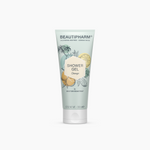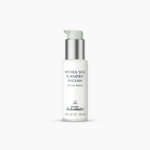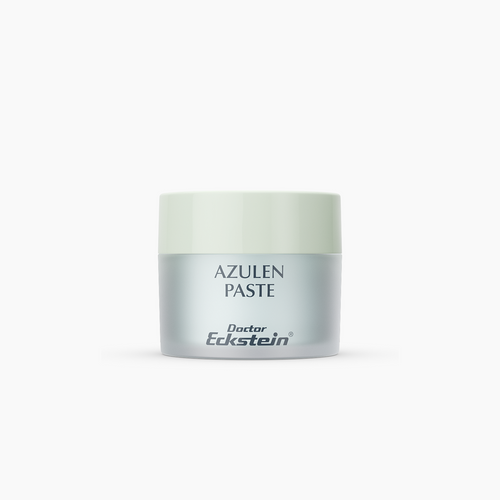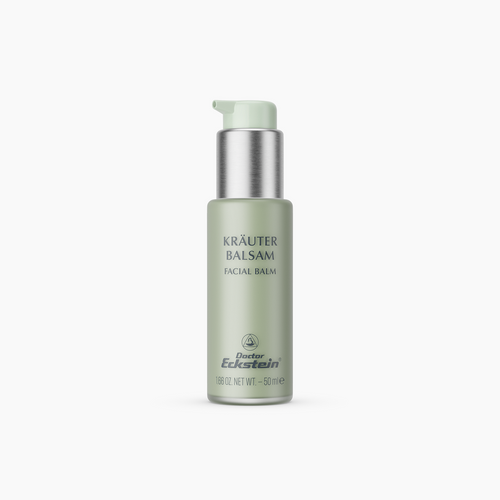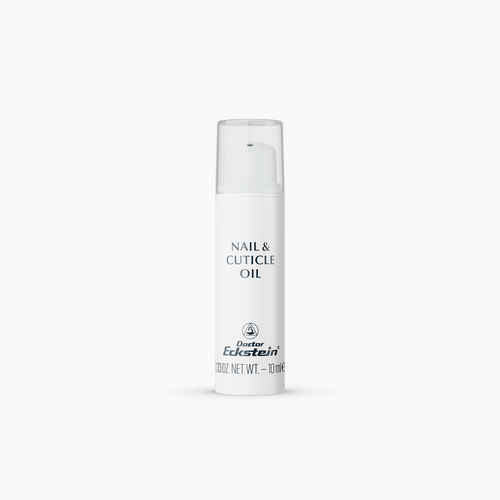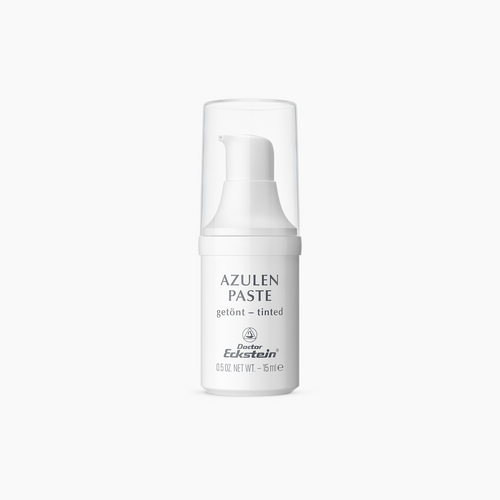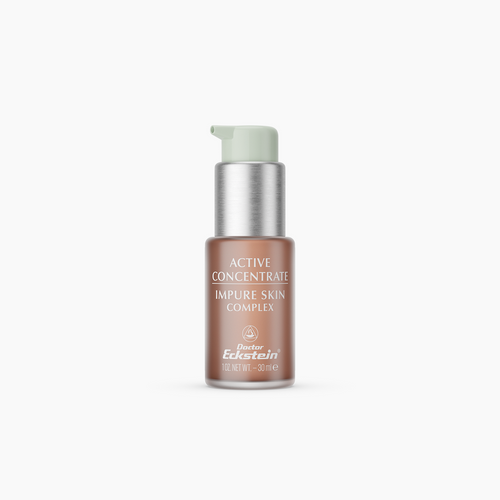Many people make an unpleasant acquaintance with skin impurities throughout their lives. When we talk about it, we usually talk about "pimples ." But from a dermatological point of view, skin impurities are considered – and designated – in a much more differentiated way. Therefore, in this blog post, I would like to give you a small overview of the different types of blemishes and how skin care can improve the appearance of impure skin.
But first: how do skin impurities develop?
Triggers for skin impurities are manifold. The most well-known are hormonal fluctuations, especially during puberty. But what is often underestimated: even a genetic predisposition and the way we live, an unhealthy diet, stress, nicotine and alcohol, medications, and even the wrong care products can be the cause of impure skin.
The triggers for skin blemishes are one thing. But what happens to the skin? If it comes to oily and impure skin, the sebaceous glands are excessively productive (seborrhea). Not infrequently, this is accompanied by temporary or permanent cornification disorders (hyperkeratosis). The result: pores clog, and skin impurities develop.
The different types of blemishes
Comedo. The comedo appears in two forms: closed and open. The closed form, the so-called "whitehead," looks like a small, light to white elevation on the skin. Here, a plug of sebum, dead skin cells, dirt, and sweat has formed in the pore. The sebaceous canal is closed upwards.
The open form is characterized by the plug pressing through the sebaceous canal to the skin's surface. Through contact with oxygen, the melanin contained in the sebum oxidizes and turns dark. That is why this form of comedo is also called "blackhead."
Papule. A papule is basically a closed comedo that has become inflamed by bacteria. The papule also looks like a small raised bump. However, it is colored red due to the inflammation.
Pustule. When we talk about "pimples," we usually have the image of a pustule in mind. In contrast to the papule, the bacteria here have led to the fact that the pore has not only become inflamed and thus reddened. Pus has also developed in the sebaceous canal.
Acne. If the skin impurities described above occur sporadically, they are unpleasant but not yet a pathological condition. However, it is different if skin impurities occur significantly increased and permanently, if they are connect under the skin surface, and deeper skin layers are also affected. Then it can be chronic inflammation of the sebaceous glands, called acne. Acne is a skin disease whose manifestations include, for example, cystic acne and acne nodes. Both arise in contrast to pustules, papules in the deeper skin tissue and can be very painful. If left untreated, it can lead to permanent scarring of the skin. That's why medical advice is essential now at the latest! However, in most cases, acne symptoms can be well controlled by medical help.
Milia (semolina). Milia are harmless tiny white cysts that form at the exits of the sebaceous glands. They are made of horn material. When they come to the skin's surface, they usually feel hard. Milia is not a skin disease. It's a purely aesthetic problem, typically disappearing on its own, but can also be cosmetically removed.




What role does skin care play in impure skin?
As I wrote in one of my previous blog posts => "Discipline instead of magic: how to treat impure skin well," there is no miracle cure that makes impurities disappear immediately. But with proper skin care, a disciplined care routine, and a healthy lifestyle, you can help the skin to find its way back into its natural balance.How skincare supports your skin in the fight against impurities
If your skin is prone to impurities, then specially developed care products start precisely where your skin needs help. In principle, the care of impure skin is about:
- a. reduce sebum production
- b. liquefy the sebum
- c. To dissolve cornifications
- d. Counteract inflammation
- e. to regenerate the skin
Many great active ingredients can help your impure skin regain balance. These include active ingredients such as witch hazel, tormentil, camphor, salicylic acid, azulene, zinc oxide, allantoin, shale oil, panthenol, peru balm, sulfur, bisabolol, peat extract, and vitamins A, B, and E, to name but a few. So do not take any skincare, but pay attention to care that corresponds to your impure skin.
Cleansing – the be-all and end-all for impure skin
A central topic in your care routine for impure skin is cleansing. You should therefore use a mild (!) cleansing product to remove excess sebum from your skin several times a day. This removes bacteria and germs from the breeding ground and thus prevents inflammation. And, of course, you also remove the unsightly grease shine from your skin. If you now want to learn what an effective care routine for impure skin looks like and also want to get the right products recommended, click here => Clear Balance, for impure skin.
Another additional tip on the subject of "cleansing": Even going to the beautician should now become a routine for you because here, your skin is professionally "cleaned out ." This allows your skin to be further improved and stabilized in good condition.
Help your skin make the most of itself!
Wishing you happy skin,
Dr. Verena Eckstein, ND
Disclaimer: The purpose of this blog is to share interesting scientific literature and skin care tips. This blog is not intended to provide diagnosis, treatment or medical advice. Content provided on this blog is for informational purposes only. Please consult with a physician or other healthcare professional regarding any medical or health related diagnosis or treatment options. Information on this blog should not be considered as a substitute for advice from a healthcare professional. The statements made about specific products are not to diagnose, treat, cure or prevent disease.
